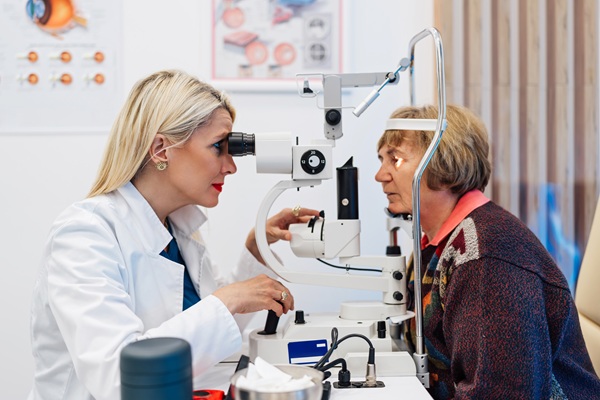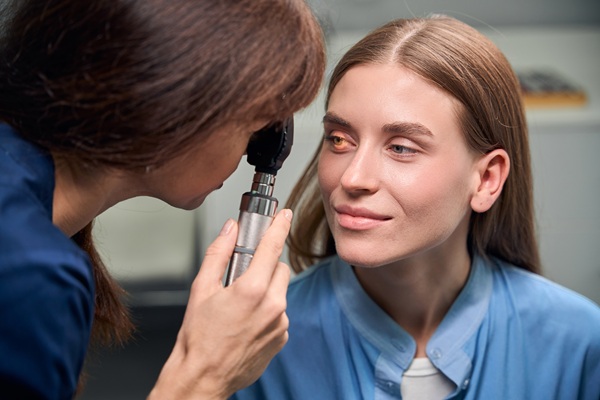What to Expect During Glaucoma Treatment Evaluation

Glaucoma treatment begins with a detailed evaluation to understand the full health of the eyes. This visit plays a key role in diagnosing glaucoma early and creating a care plan to help prevent vision loss. Knowing what to expect can make the process easier and help patients feel more at ease.
Talking about medical history and symptoms
Every glaucoma treatment evaluation begins with a review of the patient's medical history. The optometrist will ask about family history, other health issues, and any current symptoms. While glaucoma often develops slowly and without pain, some patients may report blurry vision, halos, or trouble with side vision. These early signs can help guide the direction of the exam and testing process.
Understanding the full health background helps the provider decide which tests are most helpful. It also allows them to consider risk factors such as diabetes, age, or long-term use of steroid medications. These risks can make a person more likely to develop glaucoma, even if they do not show early symptoms.
Measuring intraocular pressure
One of the first steps in a glaucoma treatment evaluation is measuring intraocular pressure (IOP). The most common method is a painless puff-of-air test that helps determine IOP by assessing the eye's resistance to air. High pressure in the eye can damage the optic nerve, which carries messages from the eye to the brain. While high pressure does not always mean glaucoma, it is one of the strongest warning signs. Pressure testing is fast, simple, and key to catching glaucoma before it causes vision loss. The provider may suggest more frequent checks or advanced testing if the results are high.
Checking the optic nerve
The health of the optic nerve is a major focus of any glaucoma treatment plan. During the exam, the optometrist will use a special lens and bright light to view the back of the eye. They will look for signs of nerve damage, such as a hollowed or pale area around the optic nerve head.
In many cases, the provider may also take a digital photo of the optic nerve to track changes over time. Spotting changes early is important for slowing the progress of glaucoma and keeping vision strong. These images help build a clear picture of eye health and provide a baseline for future comparisons.
Visual field testing
Visual field testing helps check for vision loss that might go unnoticed in daily life. Glaucoma often affects side vision first, so this test maps out how well each part of the visual field works. The test usually involves pressing a button whenever a small light flashes in different parts of the screen. The results of this test show areas where the patient may not see as well, even if their central vision is clear. These blind spots or weak areas are signs that the optic nerve may already be under stress. Repeating the test at later visits helps the provider see if the condition is stable or changing.
Scanning the layers of the eye
Modern glaucoma evaluations often include Optical Coherence Tomography (OCT). This fast and painless scan takes cross-section images of the retina and optic nerve, helping the optometrist measure the thickness of nerve fibers. Thinning nerve layers can indicate early glaucoma, even before vision loss begins. By tracking these layers, providers can decide when to begin or adjust glaucoma treatment to protect the nerves from further harm.
Planning the next steps
After all the tests, the optometrist will discuss the results and outline the next steps. If there are any signs of glaucoma, treatment may include medicated eye drops to lower eye pressure, laser therapy, or a referral to a specialist. If the results show only a risk of glaucoma, the plan may include regular monitoring to catch any changes early.
Ongoing care is important because glaucoma can get worse without any pain or early symptoms. The goal of glaucoma treatment is to manage pressure and slow down damage, not to reverse it. That is why early diagnosis and regular follow-ups are key to long-term success.
How to prepare for your appointment
Patients can help make their glaucoma treatment evaluation go smoothly by arriving with a list of any current medications and past eye issues. It is also helpful to bring a pair of sunglasses since some tests may involve dilating the pupils, which can cause light sensitivity. Asking questions during the visit is a good way to understand the process and feel more confident about the next steps.
Staying ahead of glaucoma
Glaucoma treatment is most effective when started early. Regular evaluations, advanced testing, and proper care can help stop vision loss before it begins. Choosing to act now supports long-term eye health and helps protect future quality of life.
Request an appointment here: https://www.texasoptical.net or call Texas Optical at (214) 771-7333 for an appointment in our Dallas office.
Check out what others are saying about our services on Yelp: Read our Yelp reviews.
Recent Posts
Red, itchy eyes can affect your everyday comfort and reduce overall well-being. It is important to seek effective vision care from the first sign of irritation. Proper attention to symptoms, underlying causes, and healthy habits ensures stronger long-term eye health and greater day-to-day clarity. Redness and itchiness often stem from several common triggers. These include: Allergic…
New spots or shadows drifting across vision can be unsettling, and sudden changes sometimes require emergency eye care to protect long-term sight. Many floaters are harmless, but others signal serious problems with the retina or internal eye structures. Understanding when floaters are normal and when they point to a true eye emergency helps patients act…
Glaucoma treatment plays a vital role in preserving vision and protecting the optic nerve from further damage. Many patients rely on daily eye drops to manage intraocular pressure, but these medications can sometimes come with side effects. Understanding how to recognize, minimize, and communicate about these effects supports long-term success and comfort with treatment. While…
Progressive lenses offer clear vision at near, arm's length, and far distances without the visible lines found in bifocals. They provide a smooth change in power from top to bottom, which means the eyes can focus comfortably throughout the day. With the right fit and guidance from an optometrist, progressive lenses help reduce eye strain…


